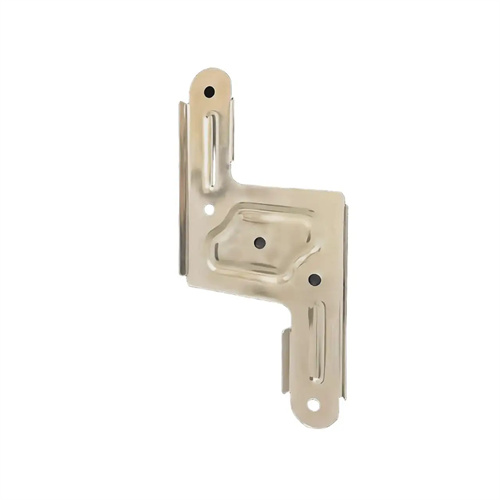Copper and copper alloy strips
Copper and copper alloy strips are metal strips with excellent properties. Based on copper, various alloys are formed by adding zinc, tin, nickel, and aluminum. These strips are widely used in electronics, electrical appliances, instrumentation, automotive, and other fields. Common varieties include pure copper strip (T2, T3), brass strip (H62, H65, H68), bronze strip (QSn6.5-0.1, QAl9-4), and cupronickel strip (B19, B30). Pure copper strip offers excellent electrical and thermal conductivity, with electrical conductivity exceeding 98% IACS, making it an ideal conductive material for the electronics industry. Brass strip, with zinc as the primary alloying element, offers excellent processability and cost-effectiveness, making it widely used in various stamping parts. Bronze strips, with the addition of tin and aluminum, significantly enhance wear and corrosion resistance, making them suitable for wear-resistant components such as bearings and bushings. Cupronickel strips, with a high nickel content, offer excellent corrosion resistance and a beautiful silvery-white luster, making them commonly used as decorative materials and corrosion-resistant components. Copper and copper alloy strips have a wide range of thicknesses, from ultra-thin strips of 0.02mm to thick strips of 3mm, and widths typically range from 10mm to 600mm, meeting the processing needs of different scenarios.

The production process of copper and copper alloy strip is complex and precise, primarily involving smelting, casting, cold rolling, and annealing. First, high-purity copper and various alloying elements are smelted in a furnace at a controlled temperature of 1100-1200°C, depending on the alloy composition. Refining removes impurities to ensure a pure melt. The molten copper is then rolled into 6-10mm thick strip using a continuous casting mill. During the casting and rolling process, the cooling rate and rolling force must be precisely controlled to ensure uniform microstructure. Next, the strip enters the cold rolling process, where multiple passes are performed to reduce the strip to the target thickness. During cold rolling, the rolling speed (typically 20-60 m/min) and reduction must be carefully controlled to ensure dimensional accuracy, with a thickness tolerance within ±0.001 mm. To address work hardening caused during processing, an intermediate annealing treatment is required. The annealing temperature ranges from 300-600°C, depending on the alloy type, to restore the material’s plasticity. Finally, the finished strips are surface treated, slit and finished to ensure that the surface finish of the strips is Ra ≤ 0.4 μm and the edges are neat and burr-free.

In the electronics and electrical appliance sector, copper and copper alloy strips are essential key materials. H65 brass strip is often used in connector manufacturing, as its excellent stamping properties ensure precise connector dimensions. A certain electronics factory uses 0.2mm thick H65 brass strip in its USB connectors, achieving a pass rate of over 99.5%. Transformer windings and shielding layers often use T2 pure copper strip, leveraging its high conductivity to reduce energy loss. One transformer manufacturer reduced its product’s no-load losses by 8% after adopting 0.1mm thick T2 pure copper strip. In relays and switches, bronze strips (such as QSn6.5-0.1) ensure stable operation due to their excellent elasticity and conductivity. One relay manufacturer has achieved a service life of over 100,000 cycles.

Copper and copper alloy strips are also widely used in the automotive industry. H62 brass strip is often used in automotive wiring harness terminals and connectors. Its excellent conductivity and processability allow it to meet complex molding requirements. One automotive wiring harness manufacturer increased production efficiency by 15% by using 0.3mm thick H62 brass strip. In automotive radiators, brass strips (such as H68) are used to manufacture heat sinks and heat pipes due to their excellent thermal conductivity and corrosion resistance. One automotive radiator manufacturer used 0.15mm thick H68 brass strip, which increased heat dissipation efficiency by 10%. Furthermore, copper and copper alloy strips are also widely used in automotive sensors and solenoid valves, ensuring the stable operation of automotive electronic systems.

With the continuous advancement of technology, the performance of copper and copper alloy strips continues to improve, and their application areas are continuously expanding. To meet the stringent requirements of new energy vehicles, high-strength and high-conductivity copper alloy strips have been developed. With a tensile strength of ≥500 MPa and a conductivity of ≥85% IACS, they are suitable for motors and battery systems. A new energy vehicle company has seen a 5% increase in motor efficiency after adopting this material. In 5G communications equipment, ultra-thin copper strips (less than 0.01 mm thick) are used to manufacture high-frequency antennas. A 5G antenna produced by a communications equipment manufacturer has achieved a 12% increase in signal transmission efficiency. Furthermore, the research and development and application of environmentally friendly copper alloy strips (such as lead-free brass strips) are also advancing. These strips meet environmental standards such as the EU RoHS Directive, expanding their applications in areas such as food processing and medical devices. In the future, with the development of high-end manufacturing, copper and copper alloy strips will continue to develop towards higher performance, thinner gauges, and more environmentally friendly features.
